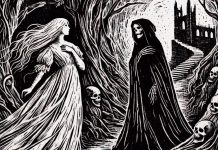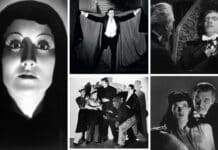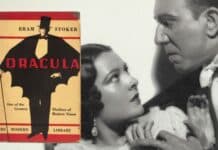DR KAJA FRANCK digs deep into Bram Stoker’s working notes to reveal the real inspiration behind the King of Vampires, Count Dracula
Most people will be able to tell you that the eponymous protagonist in Bram Stoker’s Dracula is based upon Vlad Tepes (also known as Vlad Dracul), a Prince of Wallachia who was alive during the fifteenth century.
They will also be able to tell you Vlad’s nickname, Vlad the Impaler, which he earned from his habit of impaling his enemies on wooden spikes.
They may even mention Bran Castle despite the fact that there is no evidence that Vlad Tepes ever went there. It is this knowledge which has led many fans of Dracula to go searching for his origins in modern day Romania.
However, if we really want to learn more about Stoker’s world famous vampire, we would do better not to travel to Romania than to look at the novelist’s working notes.
Up until the late 20th century, critics were dismissive of Dracula, considering it to be a sensational and tawdry Gothic text that lacked substance and depth.
This view was reassessed in the 1970s when Stoker’s notes for the novel were discovered at the Rosenbach Museum in Philadelphia but two academics, Raymond McNally and Radu Florescu.
Count Dracula was first called ‘Count Vampyr’
One thing that the notes show us is that Count Dracula’s relationship to Vlad Tepes is not as ingrained as we may believe.
For much of the early writing process, Dracula was referred to as Count Vampyr.
It was not until Stoker came across Vlad during his research in Whitby that he decided to change his antihero’s name.
Today we can learn a great deal about the bloody deeds of this tyrant but it is notable that this is not mentioned in the novel. It seems that Stoker was taken by the name more than the man himself.
Emily Gerard, ‘Transylvanian Superstitions’ (1885)
Perhaps the most important work which influenced the depiction of folklore and vampirism is Emily Gerard’s article ‘Transylvanian Superstitions’ (The Nineteenth Century Journal, 1885).
Emily Gerard was the wife of an officer in the Austro-Hungarian cavalry.
During the time that she and her husband were posted in Transylvania, she researched the local history and culture, culminating in the publication of her work The Land Beyond the Forest (1888).
The earlier article ‘Transylvanian Superstitions’ centres on beliefs about death and monsters.
It is from this article that we have the word ‘nosferatu’.
This word turns out to be a case of misinterpretation, as there is no evidence that this word existed in Romanian.
Yet the description of the vampire in Gerard’s work coheres with what we learn in the novel: ‘every person killed by a nosferatu becomes likewise a vampire after death, and will continue to suck the blood of other innocent people till the spirit has been exorcised, either by opening the grave of the person suspected and driving a stake through the corpse, or firing a pistol shot into the coffin’ (‘Transylvanian Superstitions’).
Even, the blue flames which the coachman follows on the way to Castle Dracula are found in this article.
Gerard describes how on St George’s Day hidden treasures give forth a light ‘described as a bluish flame resembling the colour of lighted spirits of wine’ (‘Transylvanian Superstitions’).
Though Stoker never visited Transylvania, he certainly researched the region, though, as so often happens, the information he found had been misappropriated, coming out changed and twisted through a foreign gaze.
Sheridan Le Fanu, Carmilla (1872)
Stoker’s notes also show how much the plan of his novel changed over the planning period.
Along with changing the name of Count Dracula, the location of the novel was also changed – it had originally been set in Styria.
It appears that the novel was originally meant to have opened with Harker meeting Dracula, in the form of the wolf, whilst in Styria.
He would also have met a beautiful young blonde vampiress lying in her tomb.
Although this was removed from the novel, it seems that these fragments found their way into the short story ‘Dracula’s Guest’ (1914) published following Stoker’s death.
One reason that has been put forward for this change of location and the removal of the opening incident is that it was too similar to his fellow countryman’s vampire novel, Sheridan Le Fanu’s Carmilla.
The novel was found amongst Stoker’s library so it certainly seems likely that it had read it.
Sabine Baring-Gould’s The Book of Werewolf (1865)
Perhaps the most surprising fact about Dracula is that he might not be entirely vampire.
Early on in the novel, Harker notes in his journal that the superstitious peasants refer to Dracula as a ‘vrolok’ or ‘vlkoslak’, something which translates as meaning ‘something that is either werewolf or vampire’ (Dracula).
Moreover, Dracula is able to transform into a wolf and has a close connection to wolves – hence the infamous line about “Children of the Night”.
There are other striking features about Dracula’s appearance which suggests that he is as much werewolf as he is vampire.
Harker describes that Count Dracula has hairs in the palm of his hands and that his eyebrows meet in the middle.
These are, according to Sabine Baring-Gould’s Book of Werewolves, signs of being a werewolf.
Stoker’s notes show that he consulted this text – in particular the details of the physical attributes of werewolves. Perhaps more surprisingly even Dracula’s teeth appear to have more to do with werewolves than vampires.
In his work, Baring-Gould describes the appearance of a young man Jean Grenier who confessed to being a werewolf in 1603.
It was said that Grenier’s ‘teeth were strong and white, and the canine teeth protruded over the lower lip when the mouth was closed’ (Book of Werewolves).
A description which we can hear echoed in Stoker’s depiction of Dracula’s fangs.
Article about vampirism in New England
It is a truth universally acknowledged that vampires are from Eastern Europe, a fact which Stoker’s novel seems to confirm. It is surprising to note, then, that amongst the notes is a newspaper clipping from the New York World.
Entitled ‘Vampires in New England’ (2 February 1896), the article describes an epidemic of vampirism in Rhode Island, caused by an outbreak of tuberculosis, that had led to a number of bodies being disinterred so that their hearts could be removed.
The author had clearly done their research: they point out that New England was once home to Cotton Mather, a great proponent of the belief in witchcraft and other supernatural entities.
The article also mentions the outbreak of vampirism in the first half of the eighteenth century in Hungary and Serbia.
The final section of the piece discusses the existence of vampire bats which are mentioned by Quincey Morris in the novel; the story he tells about his horse being fed on bears a remarkable resemblance to the one quoted in the newspaper article.
Count Dracula is also able to transform into a bat.
What I find interesting, however, is how the article suggests a Westward transgression of vampirism.
The USA was founded on ideals of enlightenment, turning away from the dark superstitions of the Old World, and yet it fell prey to these beliefs.
This eerily parallels the narrative of Stoker’s novel.








Correct me if wrong, but isn’t it fact that Stoker had no knowledge of Vlad the Impaler, and likely borrowed the name Dracula from it’s brief mentioning in his research material? I know a lot of people say that with Vlad the Impaler’s infamous reputation for pain and torture that there can be little doubt they he is the core inspiration. But yet, there is little evidence to give true validity to this claim. It is likely more coincidence.
Curious that you don’t mention Irish myth Abhartach, wich is said to be the first inspiration for Dracula, and the first vampire in European Lore.